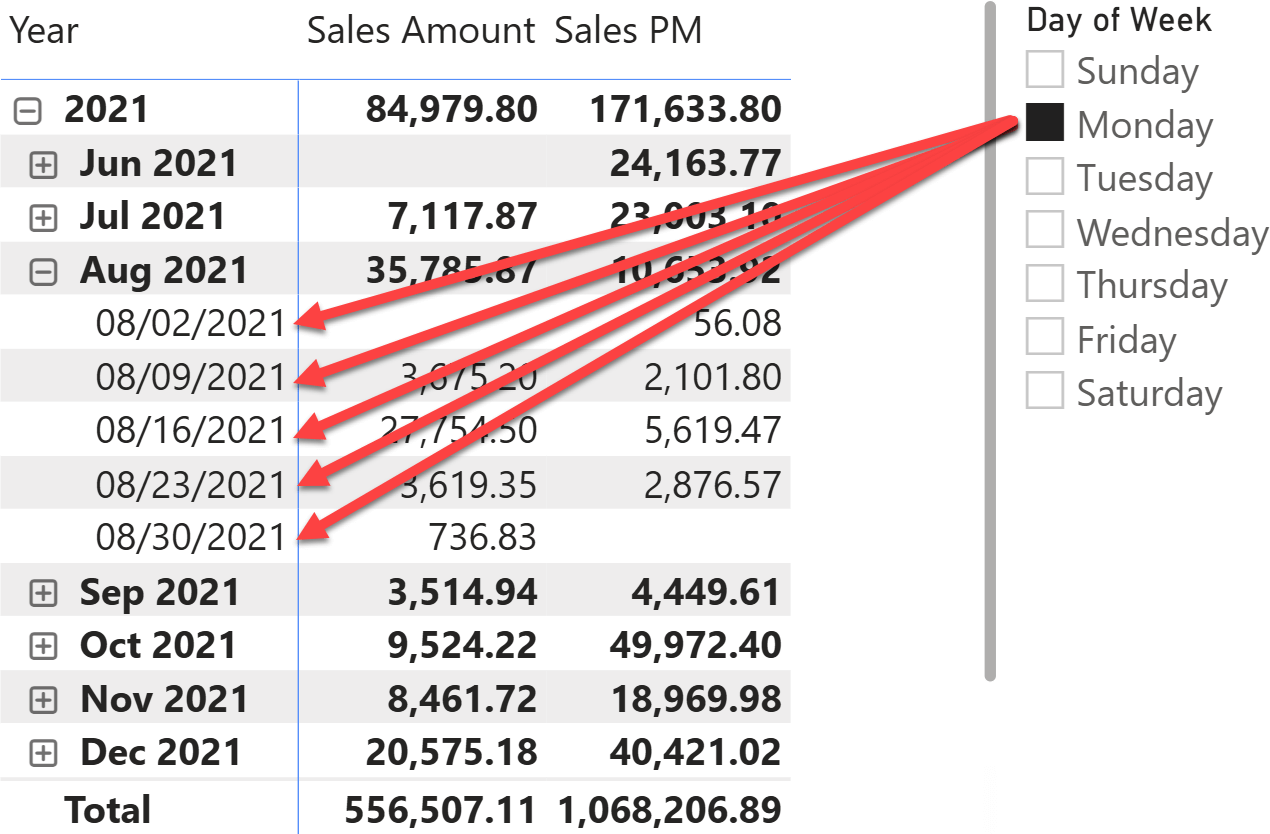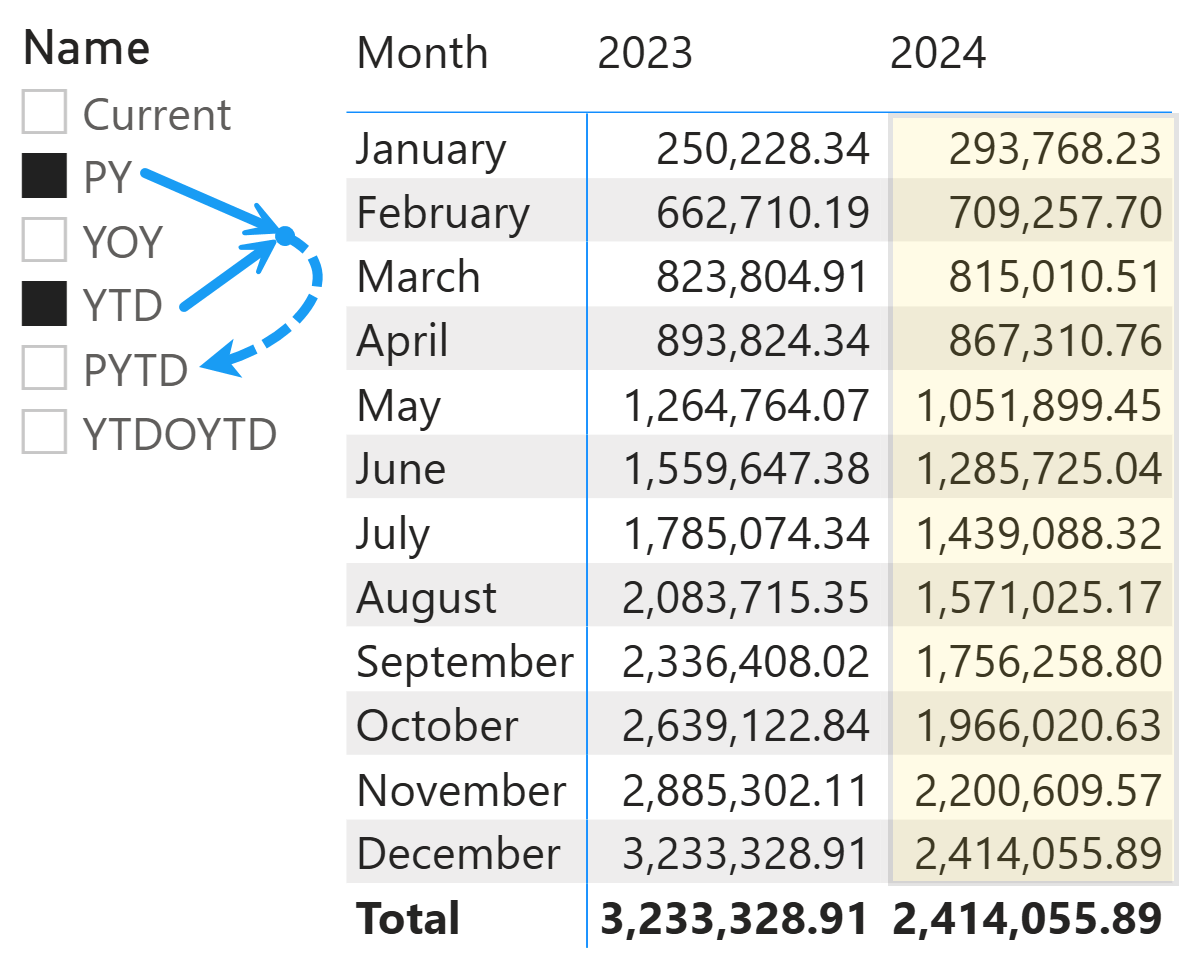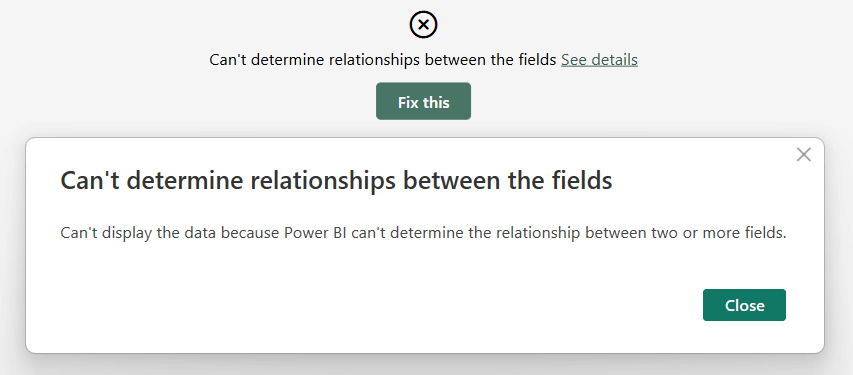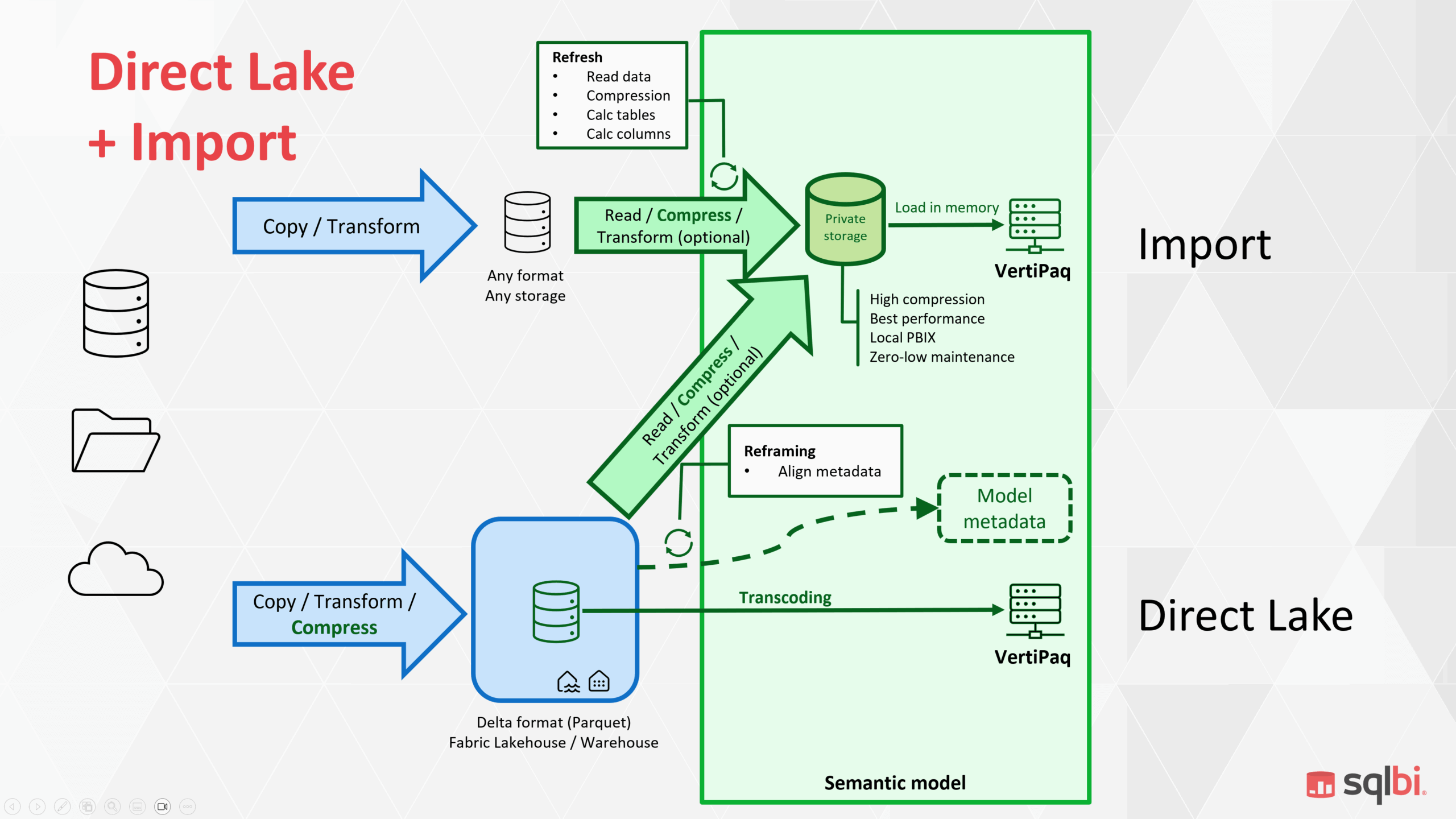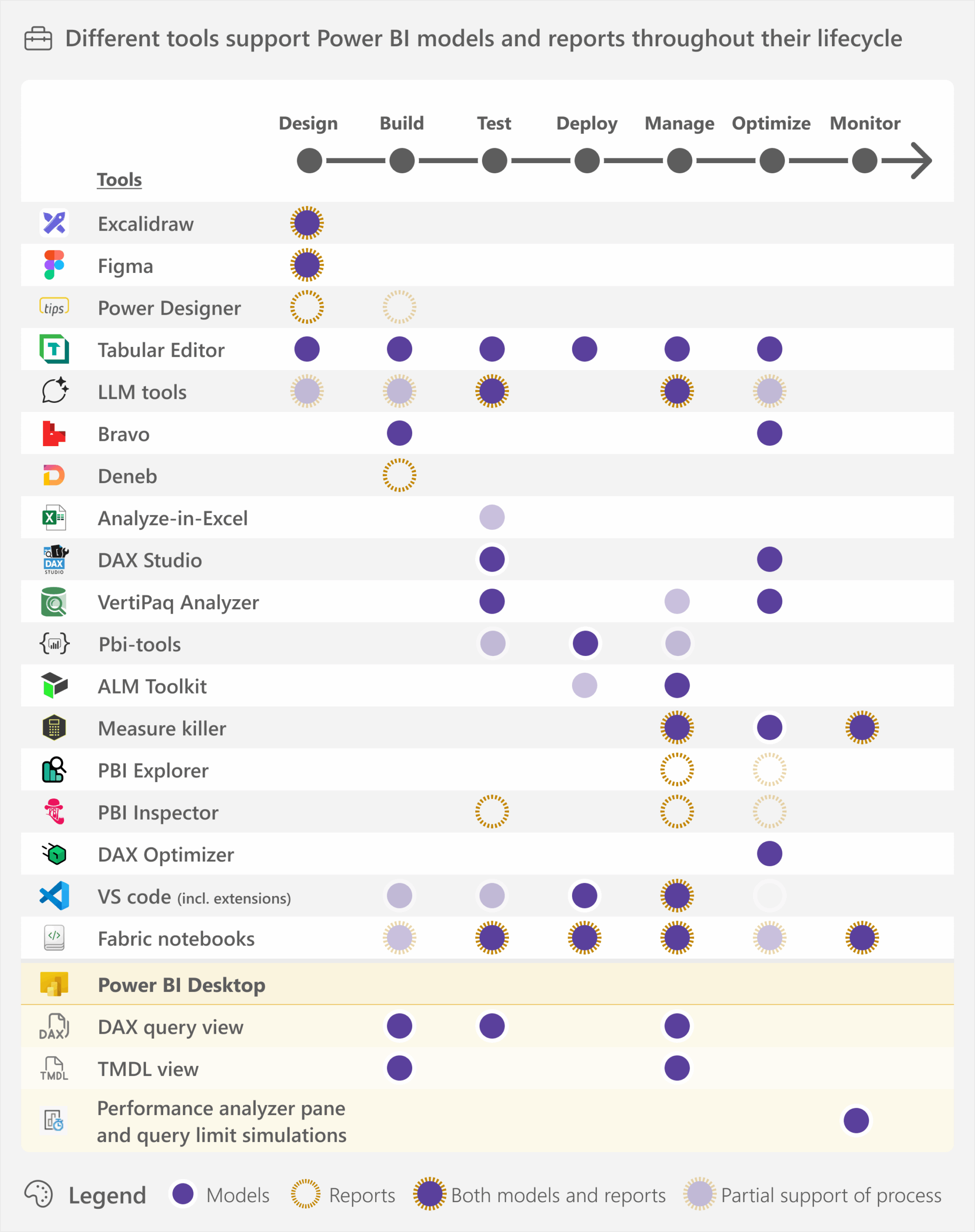-
When should you use DISTINCT over VALUES in DAX? Here is how to write resilient measures that survive bad data and model changes. Read more
-
When using time intelligence functions, the automatic REMOVEFILTERS on Date can make maintaining filters on the Date table challenging. This article shows a technique to handle filter-preserving columns in DAX. Read more
-
In this article, we examine the details of executing DAX code, with a focus on how the IF function is implemented in various scenarios. Read more
-
This article describes how to control the execution of DAX code when there are either multiple or empty selections of calculation items in calculation groups. Read more
-
This article explains why you might encounter a curious error when placing columns from unrelated tables in a Power BI matrix. Read more
-
When I presented “Choosing Between Import Mode, Direct Lake, and Composite Models” at Fabric Conf 2025 in Las Vegas, the room overflowed, and the session was not recorded. I promised to publish the material once the new Direct Lake + Import composite model… Read more
-
This article gives an overview of some of the available tools that can help you create semantic models and reports. Read more
-
We released a new course for our SQLBI+ subscribers: Security in Tabular Semantic Models. This course explains how to implement security in Tabular semantic models, considering different requirements, data model design, DAX implementation, and performance. The training is reference material… Read more
-
How to implement security in Tabular semantic models considering different requirements, data model design, DAX implementation, and performance. Read more
-
Learn how to write DAX queries and how to manipulate tables in DAX measures and calculated columns. Read more

